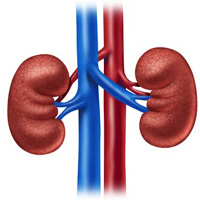Comparison of a single-use, digital flexible ureteroscope with a reusable, fiberoptic ureteroscope for management of patients with urolithiasis

Accepted: July 25, 2021
All claims expressed in this article are solely those of the authors and do not necessarily represent those of their affiliated organizations, or those of the publisher, the editors and the reviewers. Any product that may be evaluated in this article or claim that may be made by its manufacturer is not guaranteed or endorsed by the publisher.
Authors
Objectives: Ureteroscopy is one of the commonest procedures performed to manage urolithiasis. Flexible ureteroscopy has been traditionally based on reusable, fiber-optic ureteroscopes. Technology advancements permitted the development of single-use scopes with digital image. The aim of this study is to compare efficacy and safety between a reusable, fiberoptic ureteroscope with a single-use, digital scope.
Patients and methods: We collected data based on chart review from a prospectively collected database on a tertiary, high-volume hospital in Greece. Baseline, perioperative and postoperative data were gathered and analyzed. Chi-square and Fisher's exact test was used to compare qualitative data and unpaired t-test for continuous data, with a statistical significance set at a = 0.05.
Results: 40 patients underwent flexible ureteroscopy with a single- use digital scope, while 37 with the reusable scope. The two groups were matched regarding baseline characteristics and stone-related parameters. After data analysis, a shorter operative time in favor of single-use flexible ureteroscope was detected (45 vs 65 min, p = 0.001), while safety was also in favor of this type of scope with a significantly higher immediate stonefree rate (70% vs 43%, p = 0.005). Overall complications did not differ between the two groups, although a lower sepsis rate was detected in patients treated with single-use scope.
Conclusions: Our findings indicate that single-use, digital ureteroscopes are a viable alternative for flexible ureteroscopy and management of urolithiasis, especially in centers with deficient facilities for sterilization and ensured funds for more expensive reusable scopes.
How to Cite
PAGEPress has chosen to apply the Creative Commons Attribution NonCommercial 4.0 International License (CC BY-NC 4.0) to all manuscripts to be published.

 https://doi.org/10.4081/aiua.2021.3.326
https://doi.org/10.4081/aiua.2021.3.326



